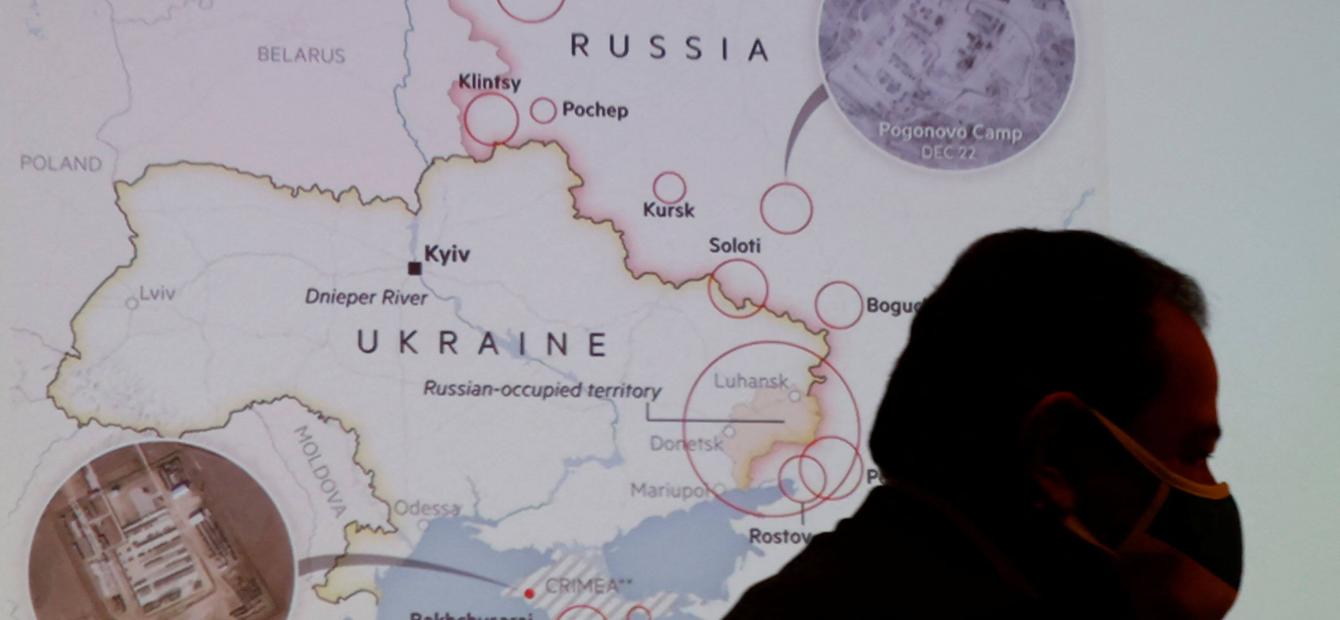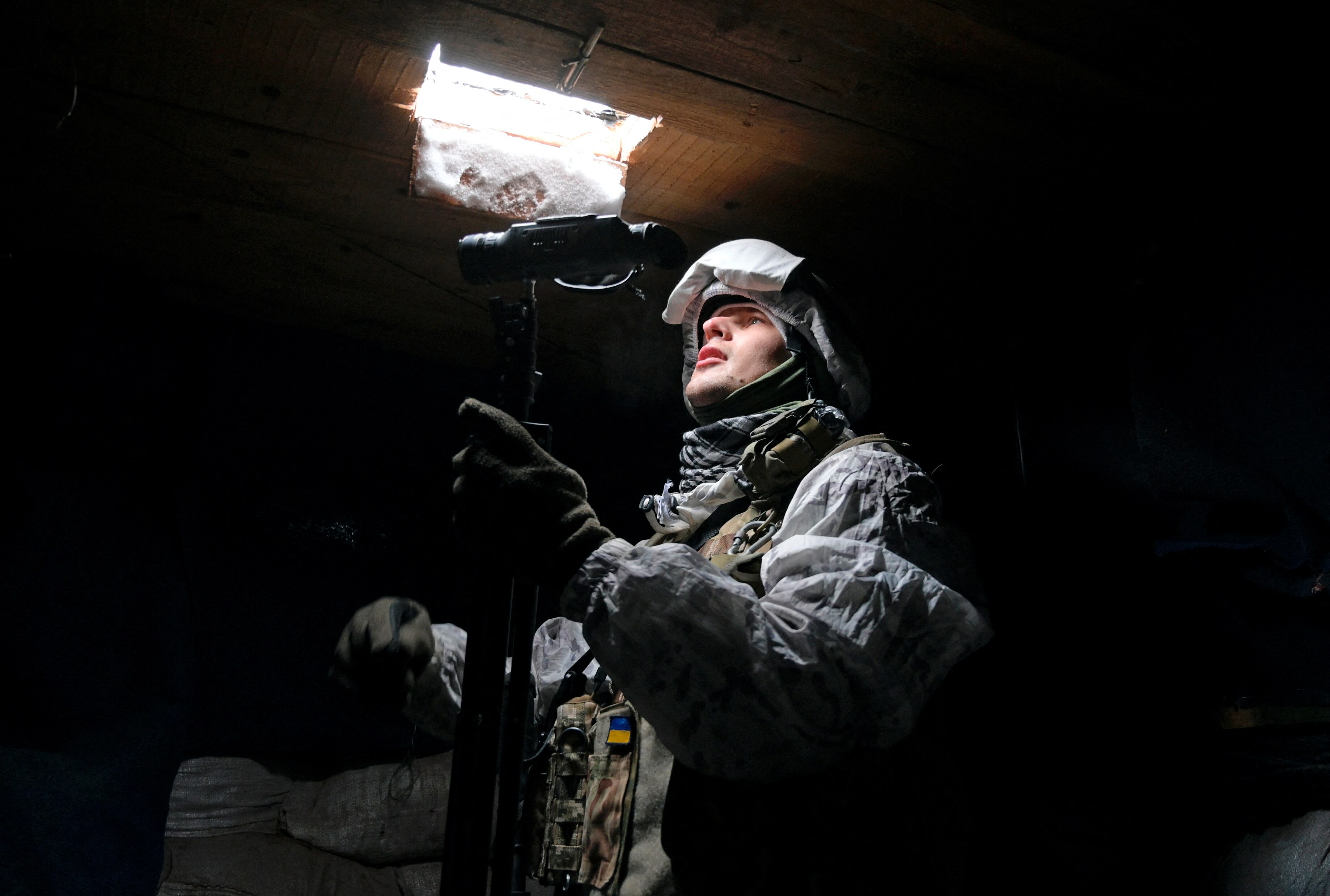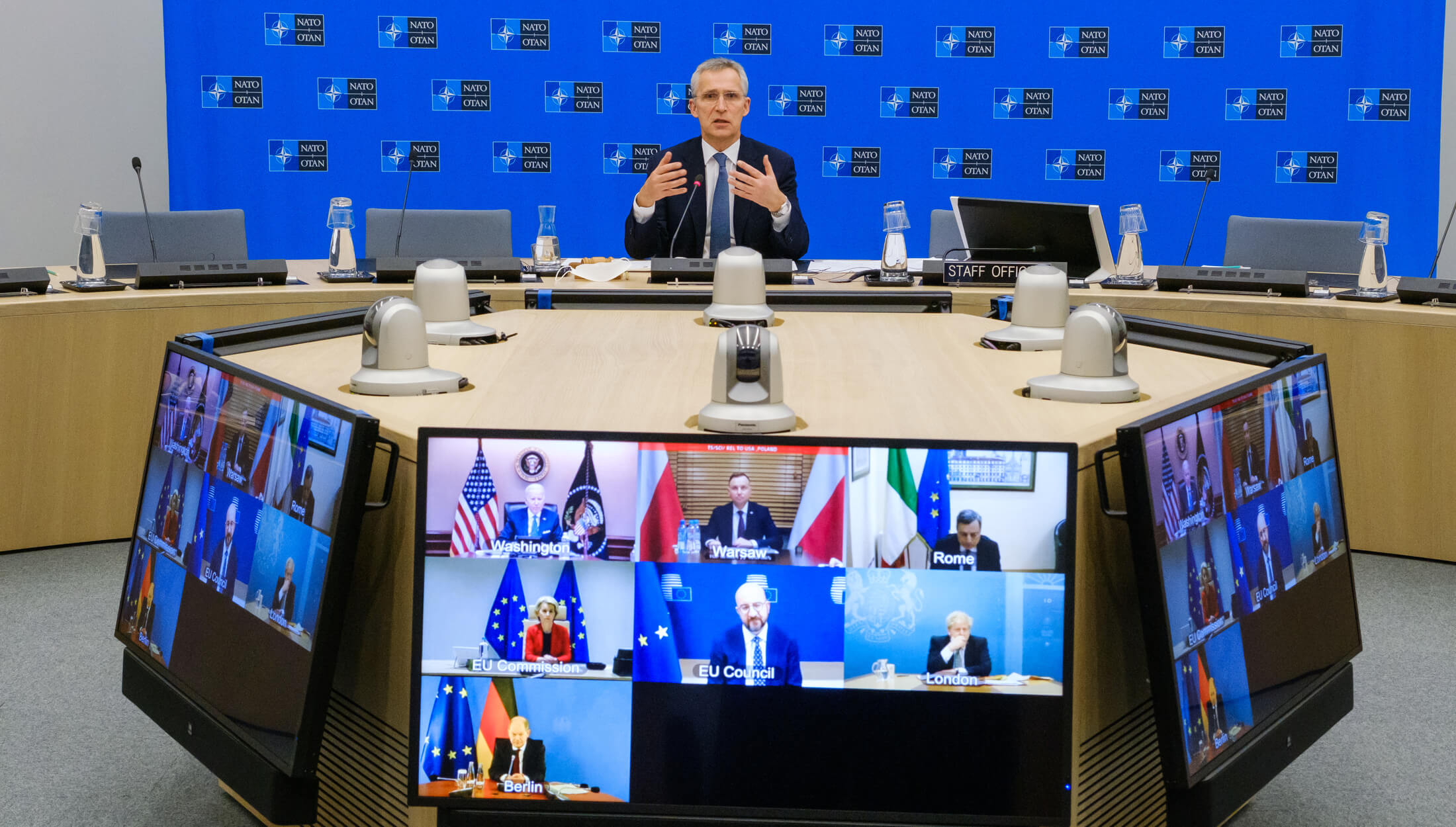
Misreading signs of Putin’s war preparation in Ukraine
Although there is much reason to be cautious about Russia’s military activities, the actual movement of Russian forces towards Ukraine’s borders has not developed quite as dramatically as is generally portrayed in Western media. The key risk now is that escalating rhetoric between Russia and the West may drive further military posturing and increase the chance of confrontation, even if this was not initially the plan.
For several months now, tensions regarding the potential Russian military invasion of Ukraine have been sustained without showing any clear path towards de-escalation. With narratives as heated as they currently are, it is yet again important to take a step back and carefully investigate what is actually known and what this could mean.
First and foremost, in understanding the underlying dynamics of the current crisis, it is necessary to understand the separate components of the threat of Russian invasion. A threat is naturally composed of both capabilities and intent. That is to say, on the one hand Russia requires the physical military capabilities to conduct a successful military operation of a scale reflecting the perceived threat, and on the other hand Russia also requires the political intent to conduct such an operation.
In a classic military scenario such as this one, capabilities are typically easier to assess than intent. Yet, short term assessments of potential offensive preparations are still a complex matter.
The intelligence problem
In early November 2021, American intelligence sources started to leak information to the media concerning a possible Russian invasion of Ukraine. At the time, this information suggested that Russia was building up its military presence on the Ukrainian border and that there was credible intelligence suggesting an intent by Russian leadership to launch an offensive across the border as soon as January 2022.
Particular claims that were attributed to US intelligence sources have failed to materialise
These leaks were supported by the occasional publication of satellite imagery1 showing large concentrations of Russian military equipment in locations close to Ukraine.2 There are, however, reasons for concern over the validity of the broader assessment of this intelligence and its public representation.3
Particular claims that were attributed to US intelligence sources have failed to materialise and while they do not undercut the potential threat altogether, especially in light of how the crisis has developed more recently, this ought to raise questions over the remaining confidence in the assessment that Russia has an intent to invade Ukraine.
One such claim, for example, was the allegation that Russia was secretly mobilising reserves across the country. Months later, it is clear this did not occur and activity at Russian military facilities largely followed typical patterns that can be expected around the holidays.
During the month of December, deployments near the Ukrainian border even reduced in pace
Other claims also suggested that Russia would continue to raise the military presence on its border to 175,000 troops, double the scale of what had been observed earlier in 2021 during the so-called spring exercises.4
The monitoring of commercial satellite imagery across the Ukrainian border region and Russian military facilities, as well as other intelligence collection methods that go beyond the information circulating in the media or on Twitter, showed deployment levels during November and December staying below those witnessed earlier in the year between April and May.
During the month of December, deployments near the Ukrainian border even reduced in pace, but this trend was rapidly turned around during January when Russia conducted a significant movement of forces into Belarus.5 The announcement of the ‘Allied Resolve’ exercises, and especially Russia’s logistical demonstration in deploying forces all the way from the Far East and Siberia to its western border region,6 is a clear signal by Moscow that it indeed possesses the means to militarily threaten Ukraine.
The timeline of these deployments, however, raises questions about how they relate to an alleged Russian preparation for an offensive that could have taken place as early as January 2022. Even though Russia is clearly demonstrating its threatening posture at this point, the actions taken by Moscow under conditions of heightened tensions need to be separated from the initial assessment that it was already planning an offensive operation.
The existence of a perception of threat over the course of the last three months makes it difficult to exclude the possibility that Russia’s more recent military movements are in fact a response to the broader geopolitical tensions and a tool in ongoing negotiations.
Ascribing the current deployments in Belarus, as well as smaller renewed exercise activity in the Western and Southern Military Districts of Russia itself, to a pre-existing intent to invade Ukraine requires validity of the assessment that deployments within Russia between October and December were initial stages of this plan.
Even in Europe, leaked statements from the French government and candid statements by high-ranking German military officers have called into question the US assessment of an invasion threat
When it comes to those movements, however, many misconceptions or partial narratives were released into the public sphere or propagated through social media. Often repeated claims in the public narrative such as that Russian military presence along the Ukrainian border is currently unprecedented, or were to have doubled between October and January, are simply untrue. Still, they do contribute to a level of tensions that could be outgrowing actual geopolitical challenges.
While there was indeed a significant level of Russian military activity near the Ukrainian border between October and December, a nuanced understanding of this activity turns out to be less dramatic than it was made out to be. In fact, even the secretary of the Ukrainian National Security and Defense Council during December7 and as recently as 24 January8 continued to downplay the risk of an actual Russian invasion.
Ukraine’s political leadership has walked a fine line between vigilance against Russian aggression, which serves its position in the form of increased military and financial support, and at the same time trying to negate talk of a full-scale invasion. Even in Europe, leaked statements from the French government and candid statements by high-ranking German military officers have called into question the US assessment of an invasion threat.
Deployments in context
The Russian military deployments near Ukraine up until December were in effect closely connected to the activity that started with the spring exercises in April. It is imprudent to consider current developments outside the context of this year-long activity.
After these spring exercises that took place across the entirety of Russia’s border with Ukraine, from Belarus to Crimea, large quantities of Russian military equipment remained in theatre. However, over the summer and towards October many of these units were removed from the Ukrainian border while an actual smaller build-up came in behind it.

Overall, most of the additional units that are still present within Russia’s own border region with Ukraine were already present in that area during April. By the end of December, the Russian military presence along the Ukrainian border was in fact smaller than it was between April and May.
When comparing the current disposition of forces within Russia, so excluding the more recent deployment into Belarus, with that prior to April deployments there is an increased presence of merely three brigades9 worth of equipment. The majority of these deployments also consist of equipment that was left near Ukraine following initial exercise activity, while credible intelligence shows that the personnel associated with those units has been back at their home bases since before the holidays.
While this may seem like a large increment, consider the fact that this amounts to less than a tenth of the amount of combat units that Russia permanently maintains in this part of its territory. Despite the fact that these military movements are certainly a reason for concern and vigilance, some perspective rapidly reduces the urgency that has been attributed to it over the course of the past several months.
Action and reaction
As mentioned before, the situation around Ukraine has now drastically changed as of January. Russia’s military deployments into Belarus clearly raise the potential interpretation of these movements as preparation for war by potentially opening another front towards Ukraine or its capital Kyiv. Even if assessments of offensive preparations between October and November were exaggerated, this is at the very least a sign that Moscow has now decided to lean heavily into the existing perceptions of threat.
Russia has already felt the effect of Western sanctions, and is struggling to even find a realistic manner to see them reduced
It is important to account for this change over the new year in trying to assess the true intent of Russia’s military activities. When considering the invasion threats of late 2021 as an exaggeration or flawed assessment (as a result of potentially biased intelligence analysis – Cold War history after all is rife with similar misjudgements, or perhaps even intentional information campaigns), it becomes difficult to project that same threat onto the more recent moves into Belarus. Instead, a lack of offensive preparations during late 2021 makes it unlikely that such intent would have suddenly developed now merely as a result of accusations.
This could indicate that the more recent preparations should be interpreted more as a reaction to the existing tensions, and as an instrument in the diplomatic opportunities10 that emerged from the late 2021 assessments. Bilateral negotiations between the United States and Russia, as a direct consequence of threat perceptions, have granted Russia a path towards negotiation on arms control agreements.11 At this point, threat perceptions through new military deployments may in fact be beneficial to Russia’s diplomatic efforts by sustaining the urgency for the West to engage with them in negotiations.
There is no clearly defined political objective that Russia could feasibly attain through a military invasion of Ukraine
Beyond Russia’s political considerations in these ongoing negotiations, its possible intent is also heavily influenced by the potential consequences of a decision to actually engage in overt military operations against Ukraine. Such a conflict could see its relations with the West scaled back even further than they already have, and lead to even more setbacks in Russia’s own perception of its security environment.
Russia has already felt the effect of Western sanctions, and is struggling to even find a realistic manner to see them reduced. An overt military invasion of Ukraine would almost certainly lead to new meaningful sanctions by both the US and the EU, and there is little left to sanction without effectively severing economic interaction between East and West, resulting in a situation similar to the Cold War era embargo.

Russian domestic concerns – both in terms of that potential economic fallout and in terms of the political knock-on effects this would have – sketch a true doomsday scenario for the Russian elite. Militarily, this operation even risks a significant overstretch as Russian security forces would have to deal simultaneously with a potentially hostile population and a significantly expanded immediate border with NATO members.
The risk that the Kremlin would be assumed to undertake in such an operation is very clear. Yet, there is no clearly defined political objective that Russia could feasibly attain through a military invasion of Ukraine. Much attention has been given to the potential for such an operation to prevent Ukraine’s membership of NATO, but the reality is that official membership of the alliance is not in Kyiv’s near future to begin with.
By all practical standards, integration into anti-Russian military structures is already underway. An open conflict with Ukraine short of complete occupation or annexation (a scale of operations simply beyond the scope what Russia could feasibly hope to manage) would more likely serve to accelerate Western support to the development of Ukraine’s military capabilities.
Without a feasible objective in Russia’s alleged offensive plans, or a clear development of capabilities towards executing them, the crisis between Russia and the West risks becoming enveloped in a dangerous misalignment of perceptions. When fuelled by imperfect or exaggerated interpretations of intelligence, these could easily spiral out of control with few opportunities left for sincere efforts to de-escalate.
The current status of the crisis also singles out Europe in particular, standing right between Russia’s military might and US intelligence estimates, having to find its ‘strategic autonomy’ by defining an independent threat assessment and charting its own course of action to defuse a potentially explosive situation.
- 1Seth Jones, Michelle Macander and Joseph Bermudez, ‘Moscow’s Continuing Ukrainian Buildup’, CSIS, 17 November 2021.
- 2‘Satellite images show Russia still building up forces near Ukraine’, Reuters, 24 December 2021.
- 3Shane Harris and Paul Sonne, ‘Russia planning massive military offensive against Ukraine involving 175,000 troops, U.S. intelligence warns’, Washington Post, 3 December 2021.
- 4Sim Tack, ‘Russia’s Military Buildup and Fears of Major Conflict’, Newlines Institute for Strategy and Policy, 27 April 2021.
- 5‘Allied Resolve’ begins – Troops spotted near the border with Ukraine as Russian forces arrive in Belarus for joint military drills’, Meduza, 19 January 2022.
- 6Albert L., ‘Russian Eastern Military District Troops Arrive in Belarus’, Overt Defense, 18 January 2022.
- 7Valentina Letyak, ‘We do not see threats of open aggression of the Russian Federation’, Fakty, 30 December 2021.
- 8Oksana Torop, ‘Some of our partners contribute to panic’, BBC News Ukraine, 24 January 2022.
- 9The additional presence of forces in Russia’s border region with Ukraine, excluding units permanently based in that area, consists of approximately twenty battalion sized units or the equivalent of manoeuvre elements forming approximately three manoeuvre brigades (with an estimated manpower between 12,000 and 16,000 troops)
- 10‘Ukraine tensions: Biden and Putin phone call seeks ‘diplomatic path’’, BBC, 30 December 2021.
- 11Jacqueline Feldscher, ‘Russia Neither Accepts Nor Rejects NATO’s Offer to Restart Talks’, Defense One, 12 January 2022.







0 Reacties
Reactie toevoegen